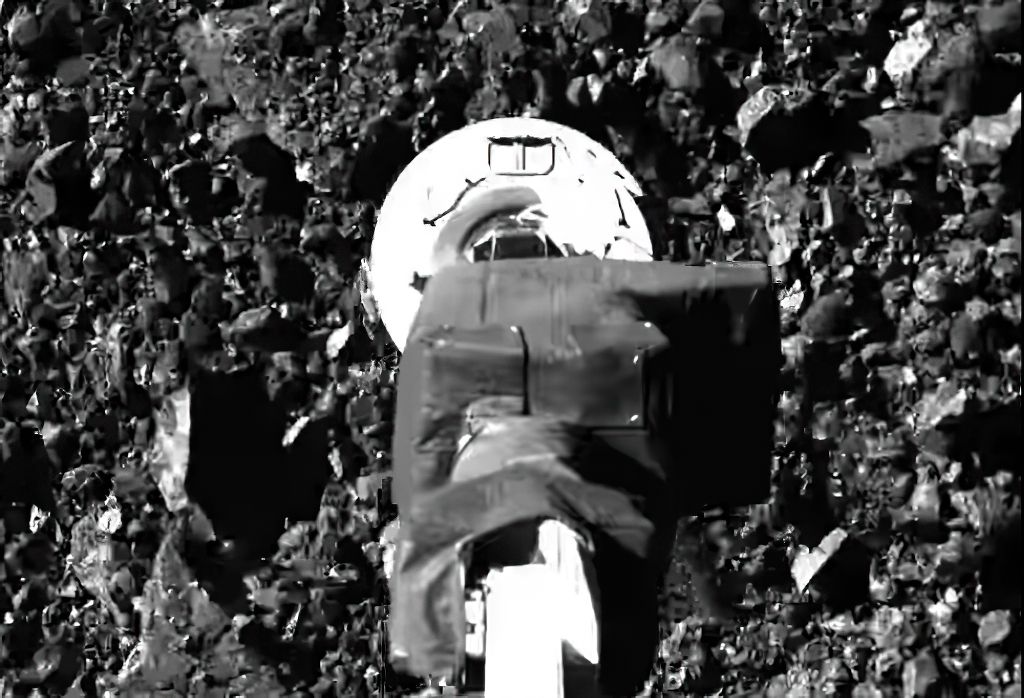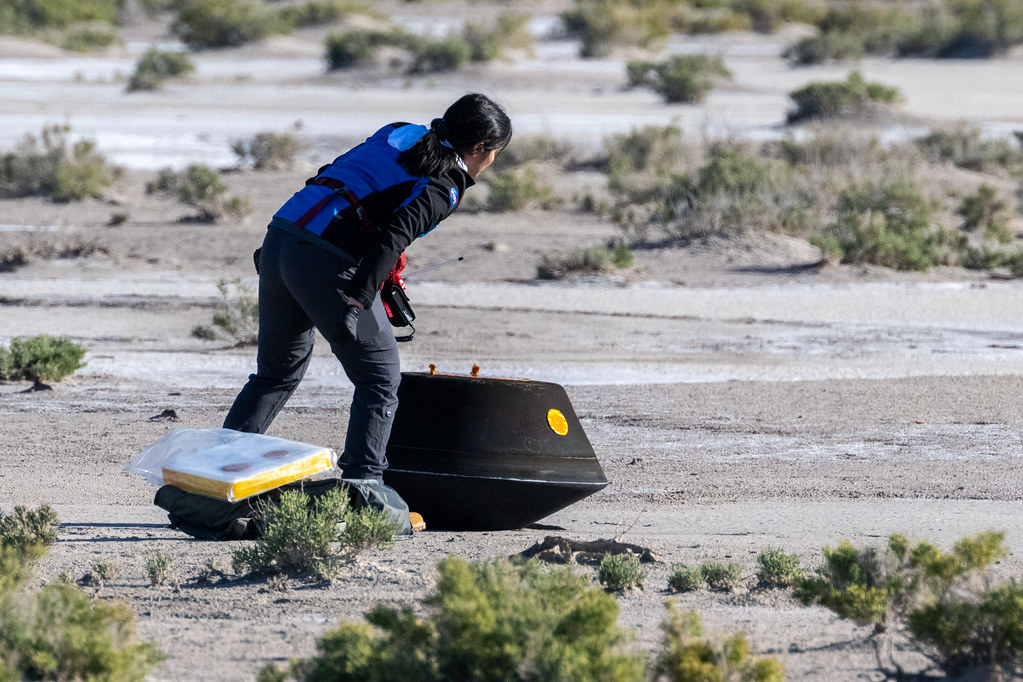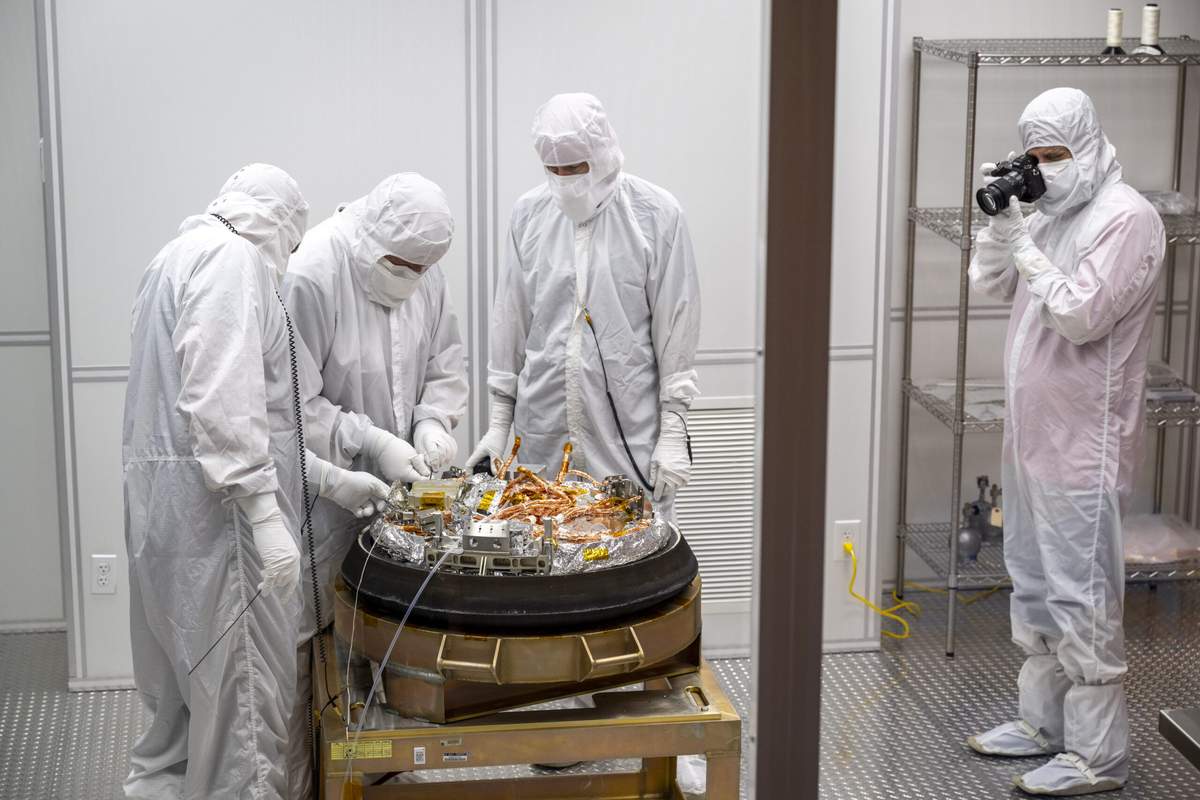On Sunday, a capsule carrying samples of a distant asteroid landed safely in the desert in Utah. The samples, collected by NASA’s OSIRIS-REx spacecraft, are the largest amount of asteroid material ever returned to Earth.
OSIRIS-REx was launched in 2016, and spent two years traveling through space to reach an asteroid named Bennu. The goal of the mission was to collect samples from the asteroid. Bennu is over 200 million miles (320 million kilometers) away from Earth. When the spacecraft reached the asteroid, it began to orbit it, getting closer and closer.
Finally, in 2020, the spacecraft touched the surface of the asteroid for several seconds, using a special arm to blow air and suck up dust and pebbles. The arm actually collected so much material that its lid wouldn’t close.

(Source: NASA/Goddard/University of Arizona.)
Since that time, the OSIRIS-REx has been heading toward Earth. Early on Sunday, the spacecraft released the capsule containing the asteroid sample. The capsule shot through the Earth’s atmosphere at speeds of up to 27,650 mph (44,500 kph), reaching temperatures over 5,000º Fahrenheit (2,760º Celsius). The outer shell of the capsule protected it from the high temperatures.
As the capsule slowed down and its temperatures dropped, a parachute opened, slowing its fall. In spite of its long and challenging trip, the capsule landed in the Utah desert, less than a meter (about a yard) away from NASA’s target landing spot.
Soon, workers from NASA arrived and wrapped the capsule up so it could be flown by helicopter to a nearby “clean room“. The capsule has now been taken to NASA’s Johnson Space Center in Houston, Texas, where a very special lab has been set up to handle the asteroid sample.

(Source: Keegan Barber, NASA Goddard Space Flight Center [CC BY 2.0], via Flickr.com.)
Scientists believe that studying asteroids like Bennu will tell them what things were like when the Solar System began to form about 4.5 billion years ago. Scientists believe that the materials that make up asteroids may have led to life on Earth.
On Tuesday, the sample container will be opened. The material in the container is expected to be, by far, the largest sample ever brought back from an asteroid. Scientists aren’t sure how much the sample will weigh, but they think it may be around 8.8 ounces (250 grams).
Scientists are excited about the sample because they believe it will be almost completely unspoiled.

(Source: NASA/Keegan Barber [Public domain], NASA.)
The OSIRIS-REx mission will help scientists understand more about the early Solar System, and how life might have begun on Earth. Scientists will look for chemicals that are important to life, such as amino acids – the building blocks of proteins. They will also look for any signs that these simple molecules were starting to combine.
And what about the OSIRIS-REx spacecraft? The spacecraft still has power and working equipment. So it’s been given a new mission. The OSIRIS-REx will now be called OSIRIS-APEX, and it will travel to another asteroid, called Apophis, to study it.
Did You Know…?
Japan has sent spacecraft to study asteroids twice before. Its first Hayabusa mission returned with a tiny amount of material from an asteroid. Last year, its Hayabusa2 mission collected material from both the surface and inside an asteroid. The Hayabusa2 successfully returned to Earth in December, 2020.
* OSIRIS-REx stands for Origins, Spectral Interpretation, Resource Identification, Security-Regolith Explorer.
